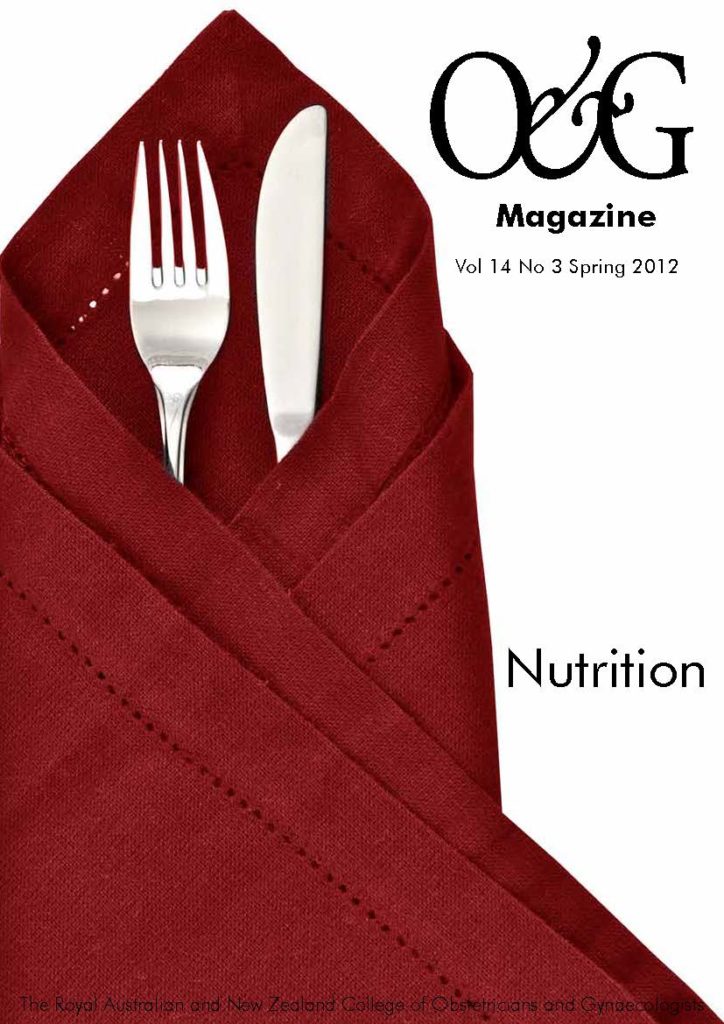Had time to read the latest journals? Catch up on some recent O and G research by reading these mini-reviews by Dr Brett Daniels.
Day case hysterectomy
These two small studies report the experience of two centres with experience of same-day hysterectomy services. One study asserts that less than one per cent of hysterectomies performed in Norway result in the patient going home the same day. They report on 150 women who received a vaginal hysterectomy as an outpatient. Their unit provides a protocol including enhanced preoperative assessment and information provision and management of postoperative nausea and pain. Of the 150 women in the study 84 per cent were able to be discharged as planned on the same day as the surgery and 93 per cent of women reported a satisfaction score of above seven on a ten-point visual analogue scale.
The second study reports 21 women were discharged the same day as total laparoscopic hysterectomy bilateral salpingo-oophorectomy and pelvic lymphadenectomy for stage 1 endometrial cancer. They reported no readmissions or significant complications. While both of these studies are quite small, they show that hysterectomy – either vaginally or laparoscopically – is a viable day-surgery procedure for some women. It is notable that both studies were performed in units where outpatient hysterectomy was specifically planned, with the concomitant resources for pre- and post-surgical care.
Rettenmaier MA, Mendivil AA, Brown JV et al. Same-day discharge in clinical stage I endometrial cancer patients treated with total laparoscopic hysterectomy, bilateral salpingo-oophorectomy and bilateral pelvic lymphadenectomy. Oncology. 2012, 82: 321-6. Engh ME, Hauso W. Vaginal hysterectomy, an outpatient procedure. Acta Obstetricia et Gynecologica Scandinavica, 2012, doi: 10.1111/j.1600-0412.2012.01502.x.
HRT for menopausal symptoms
At various times over recent decades HRT has been seen as a panacea for the health problems of older women, or a dangerous prescription likely to lead to an early death from cancer. Many doctors will have seen a reduction in demand for HRT following concerns raised by the Women’s Health Initiative (WHI) trial, with women fearful of the increased risk of breast cancer. However, in the ensuing years further analysis and new research has enabled doctors to reassess the WHI results.
This brief statement issued by a number of North American societies, including the North American Menopause Society, the American Society for Reproductive Medicine and the Endocrine Society, succinctly concludes that HRT including oestrogen – plus a progestogen if the uterus is present – is recommended for control of menopausal symptoms in women under 59 years of age, or within ten years of menopause. The authors recommend that clinicians individualise their use of HRT, considering issues such as risk of thromboembolic events, cardiovascular disease and breast cancer. They further recommend that HRT is used for the minimum duration needed to relieve menopausal symptoms. They suggest topical vaginal oestrogen as sole treatment of vaginal dryness and dyspareunia are the only symptoms.
Stuenkel CA, Gass LS, Manson JE et al. A decade after the Women’s Health Initiative–the experts do agree. Fertility and Sterility 2012, 98: 313-314.
Antidepressants in pregnancy
With training in psychology before medical school, I have often been involved in the treatment of depression in women of reproductive age. To make a broad generalisation, many doctors involved in antenatal care seem to place more weight in primum non nocere (first do no harm) research and give insufficient weight to the burden of depressive disease in what is, for many women, a vulnerable time. This can result in women not receiving antidepressant treatment during pregnancy.
A US study retrospectively examined the Medicaid records of over 200 000 singleton pregnancies between 1995 and 2007. At the beginning of the pregnancy 23 000 women had prescriptions for antidepressants, but only ten per cent filled prescriptions during the pregnancy. Seventy-five per cent of those women did not fill a prescription in the second
or third trimester. The study is limited by the indirect nature of much of the data presented. For example, LMP and gestation at delivery were estimated for 15 per cent of study participants as they were not available from the records examined by the authors. Similarly, there are no data on congenital malformation, a common concern of pregnant women. The presence of depression was determined by either the recording of an ICD depression code in patient records in the 180 days before LMP, or the filling of a prescription for antidepressants before or during the pregnancy. The authors report that antidepressant use in the second trimester significantly increased the risk of shortened gestation by two to six days, while use in the third trimester increased the duration of pregnancy. Selective serotonin reuptake inhibitor (SSRI) use in the third trimester was associated with an increased rate of neonatal convulsions, although this was a rare complication, reported in 119 of over 32 000 women using antidepressants in the pregnancy. These results should be interpreted with caution, given the limitations of the study; in particular, the ascertainment of data regarding the diagnosis of depression from hospital and Medicaid records.
A recent Norwegian study used self-administered questionnaires at 17 and 30 weeks gestation to 63 000 pregnant women. Of these, 699 women reported using antidepressants in pregnancy. Exposure to SSRIs during the first trimester was not associated with increased risk of congenital malformation or cardiovascular malformations, which have previously been linked to SSRI use. They also concluded that antidepressant use during pregnancy did not increase the risk of preterm birth or low birthweight.
The results of these studies leave the obstetrician uncertain what advice to give women considering using antidepressants during pregnancy. The Norwegian study, while smaller, has the benefit of directly gathering information from women during their pregnancy, but this is limited by being a self-report. The US study is larger, but data on filling prescriptions does not necessarily reflect actual medication use. There is a large difference in the rate of reported antidepressant use in the Norwegian and US studies (about one and ten per cent, respectively). Obstetricians will have to be guided by individual cases; however, it may be that antidepressant use is a reasonably safe option for many women, with fewer adverse sequelae than previously reported.
Hayes RM, Wu P, Shelton RC et al. Maternal antidepressant use and adverse outcomes: a cohort study of 228,876 pregnancies. AJOG 2012, 207:49.e1-9.
Nordeng H, van Gelder MMHJ, Spigset O et al. Pregnancy outcome after exposure to antidepressants and the role of maternal depression, Journal of Clinical Psychopharmacology, 2012, 32: 186-194.






Leave a Reply